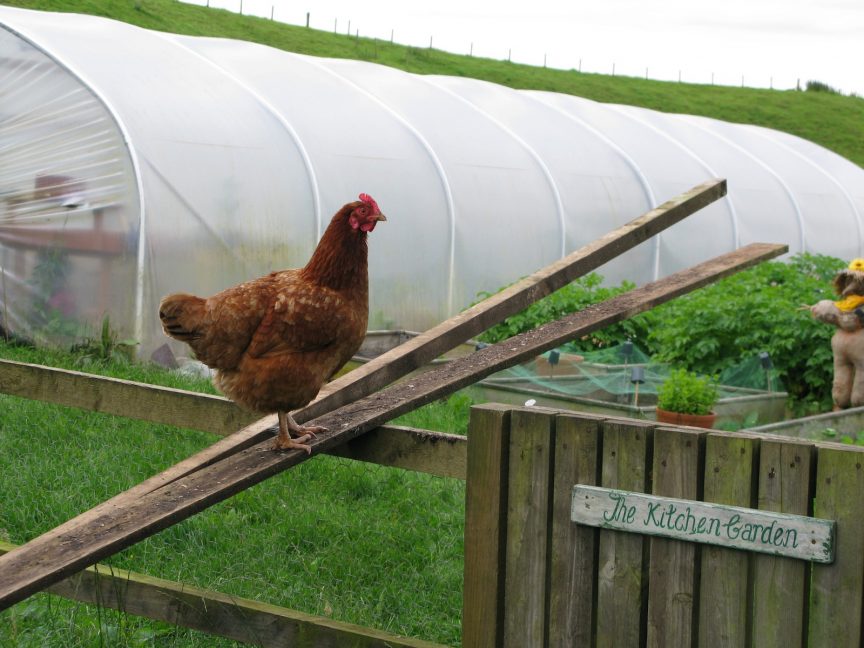
The Story of Our Kaleyard*
*A Scots word meaning Kitchen Garden
When we first moved to The Lint Mill in October 2009, Colin left behind a beautiful half plot allotment at the Kelvinside Allotments near the Botanic Gardens in Glasgow. Leaving it was one of only a few small regrets we had when making our ‘move to the country’. On moving-in day Colin enthusiastically identified a section of a paddock that he wanted to turn into a large kitchen garden, he had aspirations now for something a little larger than a half plot!
However, this well established paddock had supported nothing but horses and sheep for the previous 20 years. The grass is predominantly rough meadow grass, which is fine for our horses (both ‘good doers’) and our hardy native sheep, but it is difficult to turn into cultivatable land. The couch grass, a perennial grass that rapidly spreads by rhizomes (underground stems), was a particular problem. Couch grass is an old enemy for many gardeners. Its wiry, underground stems and creeping shoots pop up around garden plants and before long can take over a bed. So an early question became how should we manage the cultivation of the area?
We knew the previous owners had not used chemicals on the land and we were very keen from the outset to manage our smallholding along organic principles, believing that sustaining and enhancing the health of soil, plant, animal, human and planet is one and indivisible. Some advised us to have a one-off cull with Glyphosate but that didn’t sit at all easily with our organic intentions. We looked at a number of specific systems such as permaculture and no-dig but realised that were were going to get nowhere fast unless we tackled the paddock grass and weeds.
In addition, it became clear quite early on that the topography of the land combined with the local climate (which is 2-5° below the national average for the UK) meant that unless we had shelter, we would be very restricted in terms of what we could grow. So a polytunnel was to be the first part of the solution. It was one of the first and best decisions we made. We bought a 48’ x 18’ tunnel from the excellent First Tunnels company and during one gloriously hot weekend in April 2010, the lovely Steven and Luke from First Tunnels constructed our polytunnel for us.
Now that we had some of the paddock under cover, the digging could begin.
We planted directly into the soil and had some reasonable success in our first growing season, planting lots of things just to see what would thrive in the sandy, free draining soil that we have here.
Meanwhile, we transferred the raised beds outside with the plan to develop another area, over twice the size of the polytunnel for outdoor growing.
It wasn’t long before the couch grass began to re-establish and now that the land had been disturbed the weeds began to flourish freely. Despite charming names such as Mouse-ear Hawkweed, Prickly Sow Thistle, Pineappleweed, Creeping Thistle, and Greater Plantain, the weeds were an invasive nuisance on this part of the land. The broad-leafed docks with their huge tap roots and common nettles were also a big problem. We have lots of wild areas around the holding to encourage biodiversity and we spend time and thought on natural grassland management for our horses and sheep but this area was supposed to be for the abundant crops of fruit and vegetables that would feed us year round, so solutions to the weeds needed to be found.
The polytunnel was tackled first in January 2011 and we decided on weed suppressing fabric, a system of raised bed type areas demarcated by hazel hurdles and permanent gravel paths of local stone.
This made a huge difference, not least psychologically, as the whole growing area became more manageable and the space became a real pleasure to work in. The organization of the crops, rotation between beds and companion planting was more systematized and we began to reap the benefits in our vegetable harvest that summer. This enabled us to have year round crops for the first time since we’d arrived at The Lint Mill. It felt like a huge achievement.
We then turned our attention to the outdoor section of the kitchen garden. We tried many solutions here. We tried digging…
…we tried pigs…
…and although all of these animals made helpful contributions, we were still losing the battle with the weeds.
We finally arrived at a pig rotavated area, a blank canvas in spring 2012
and optimistically, we positioned the raised beds and had another go. It had become a real Scots Kaleyard as we discovered that what was possible to grow outside were mainly brassicas such as Brussels sprouts, curly kale, cauliflower, pointed cabbages, red cabbages, cavalo nero and broccoli (although the hardy broad beans did well outside too).
However, towards the end of summer 2012, the weeds had control once more and the paths, despite coverings made from old wood, cardboard and lino, were becoming impassable again.
A more radical solution was needed. So, once the weeds had died back over the winter, we made the decision to level the whole area, cover it with weed suppressing black fabric and make new raised beds. We had been avoiding this solution largely on the grounds of expense as it is an enormous area to fill with raised beds. However, my sister and Colin worked on a new design for the timber beds, which would be more substantial and significantly more cost effective than the proprietary types on the market. The beds have been filled with good quality organic compost and the paths have been made with bark chippings.
A fence protects the area from Mr Darcy, Miss Bennett and Sybil, our geese and the little gate is nostalgically graced with Colin’s old plot number plaque 99b, from his treasured Glasgow allotment.
We are only part way through this project but already there is a new sense of order to our kaleyard and ten lovely 8’ x 4’ beds waiting to be filled as soon as the April frosts are over (we have learned the hard way not to plant out too early in our little corner of South Lanarkshire!). The remainder of the area is covered in weed suppressing fabric, so the design can evolve as funds become available. All in all we feel we have a much more lasting solution this time, but of course time will tell.
The final part of our kitchen garden story is the building of the fruit cage. Colin had dug out and levelled the area, covered it with more weed suppressing fabric and my sister and I planned to build the structure while Colin was lambing. Sadly, the snow and frozen earth prevented us from achieving this over the last week but the area is ready and the wood has been delivered, all waiting for the weather to improve. Meanwhile, the 20 raspberry canes my mum sent us, the new black, red and white currant bushes will be planted out and protected from our geese temporarily with sheep hurdles until the structure can be built.
It’s been a fascinating process and like every aspect of our lives at The Lint Mill it has involved a great deal of learning. Everything takes time, care, patience, some money and thankfully some lovely sisterly help. And of course building a kaleyard is about much more than growing a few vegetables, it’s about connecting with this land we inhabit, connecting with the deepest parts of ourselves as we cherish the process of growth in all its guises.
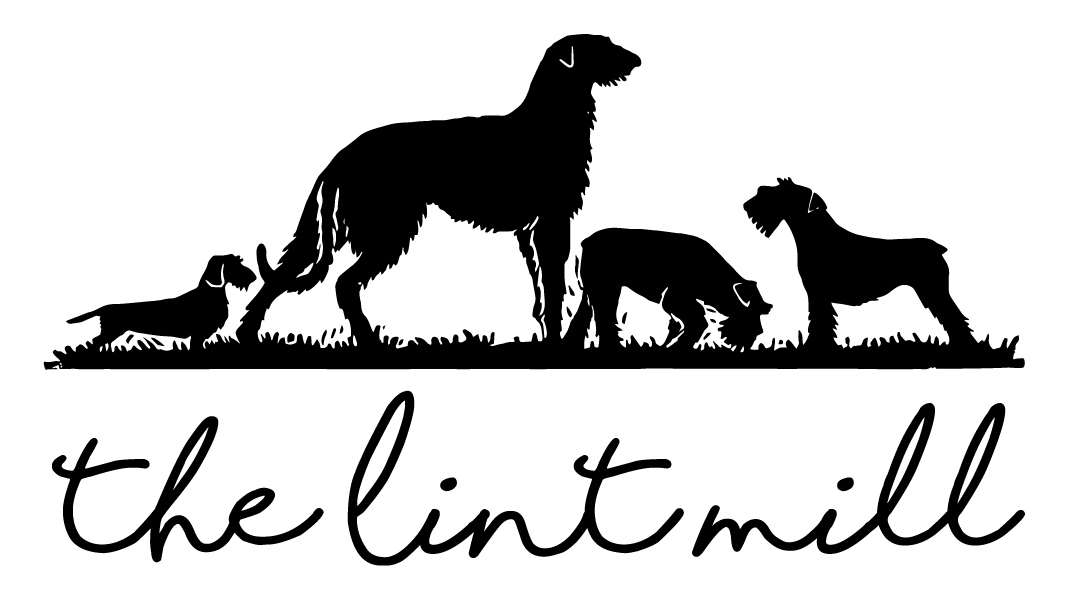
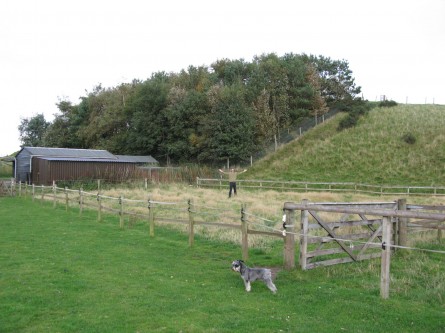
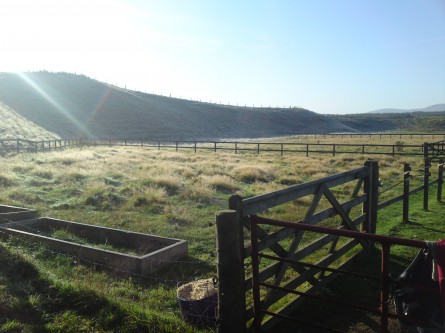
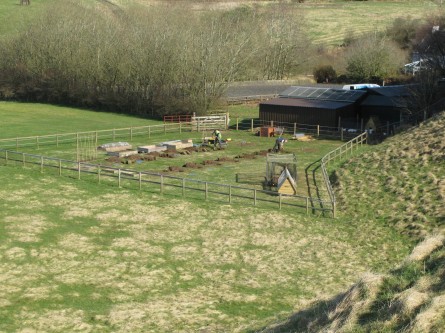
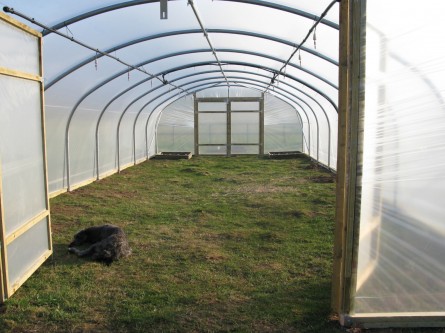
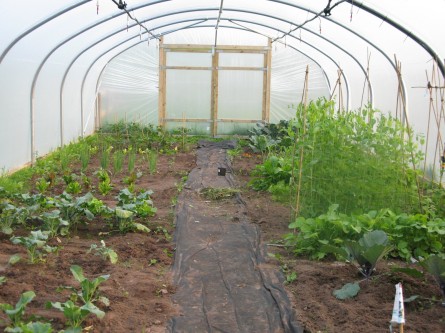

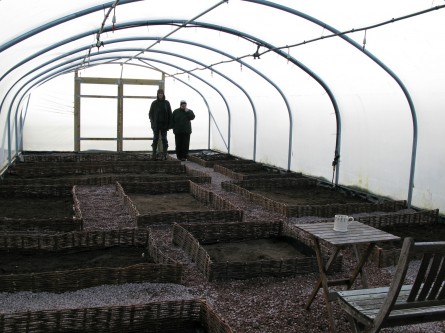
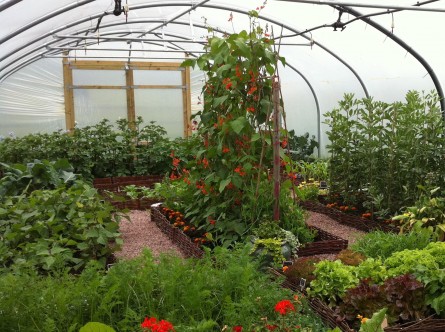
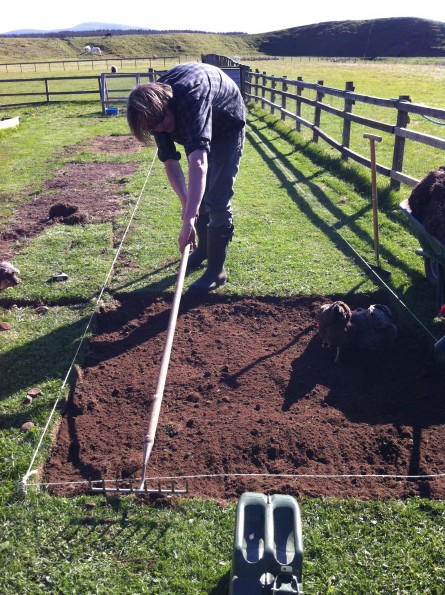
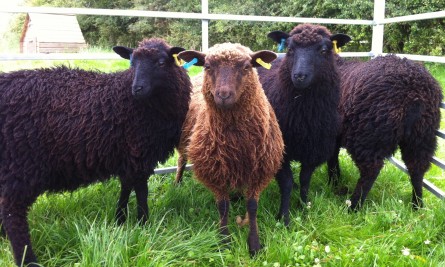
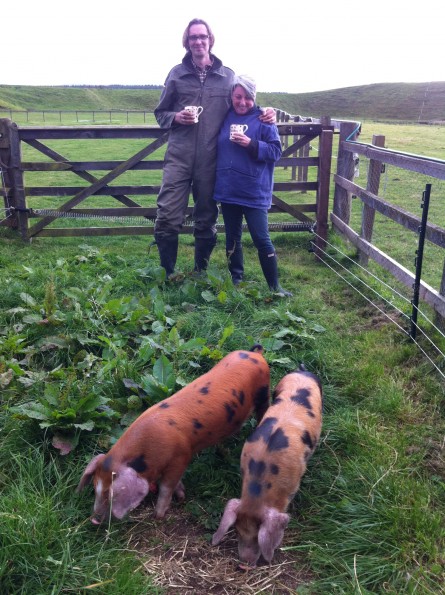
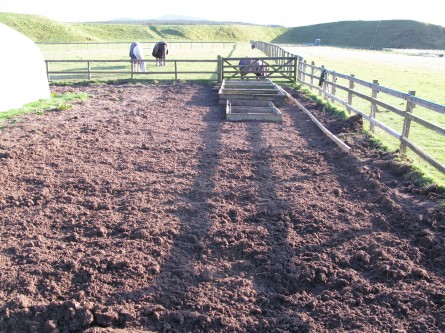
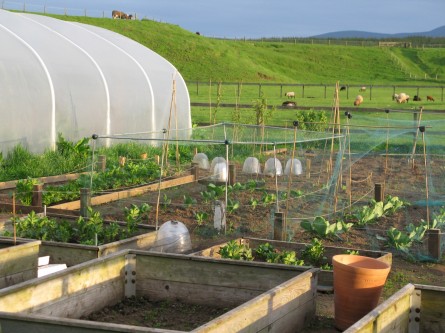
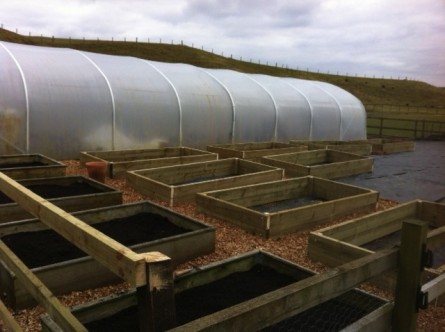
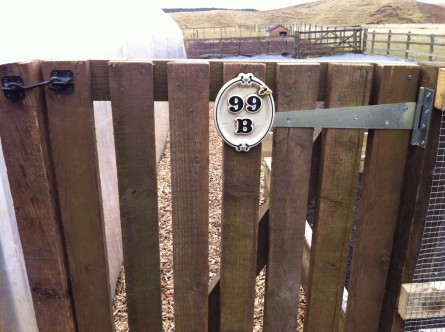
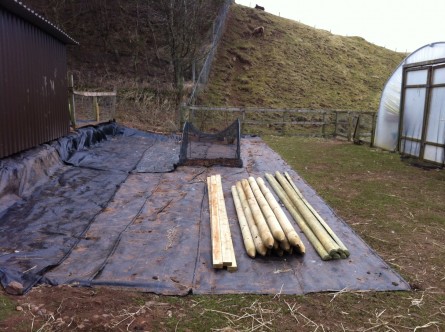


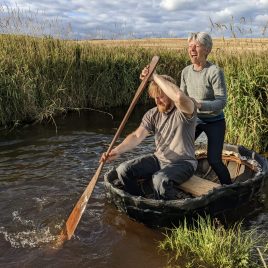
A new epic blog post today. An illustrated story of creating our kitchen garden from October 2009 to today.
https://t.co/24OTEfpOw4
A really absorbing article, Debby. I very much enjoyed reading it. Now I shall wait patiently for my raspberry jam.